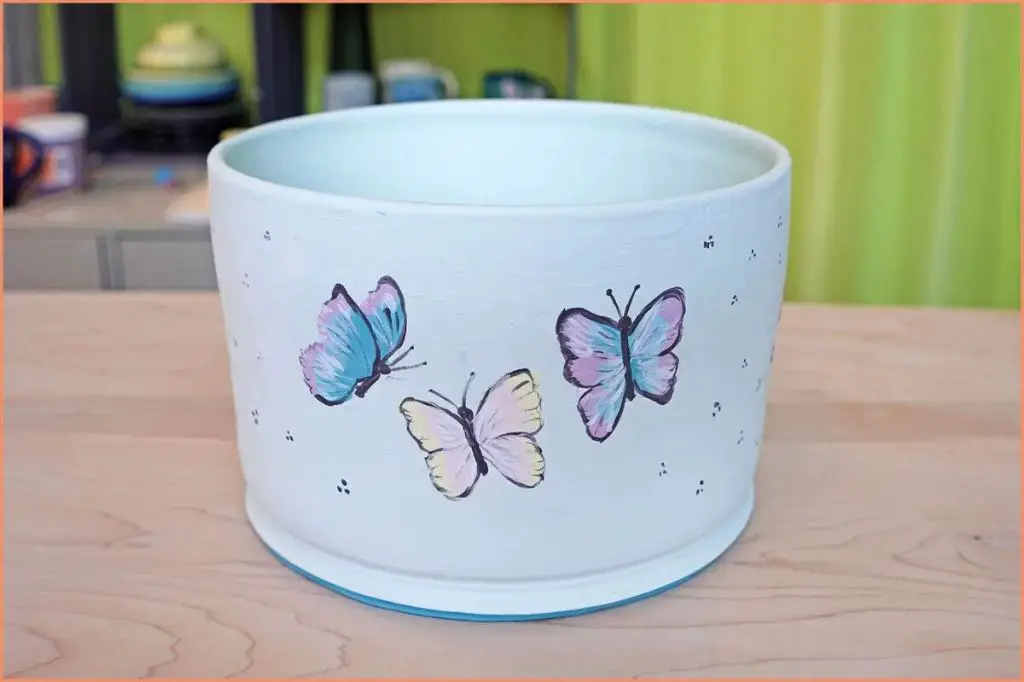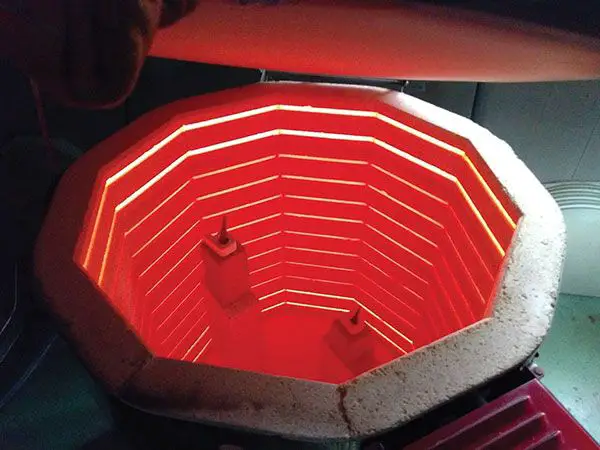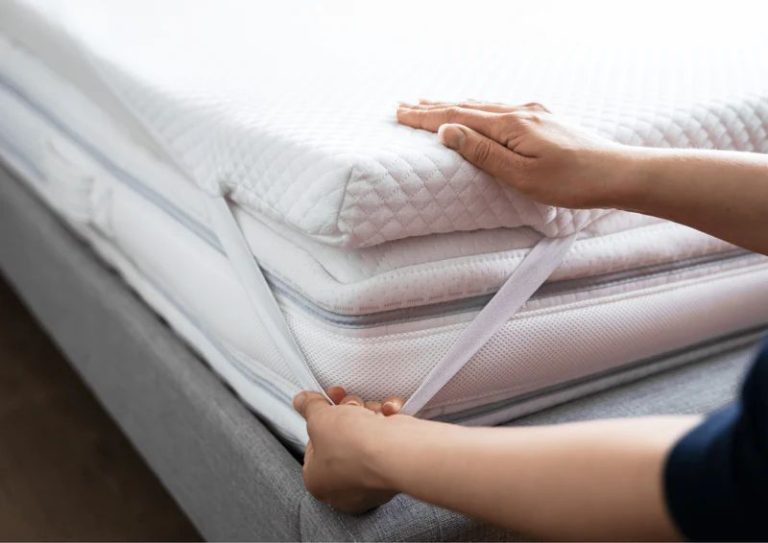What’S The Difference Between Greenware And Bisque?
Greenware and bisque are two important stages in the ceramic manufacturing process. This article will clearly define what greenware and bisque are, explain the differences between them, and provide an overview of how they fit into the creation of ceramic pieces.
Understanding the unique properties and purposes of greenware versus bisque is helpful for potters, ceramic artists, or anyone interested in learning more about how ceramics are made. We’ll explore when each type of ceramic ware is used, how they are formed, and what happens to them through the firing process. By the end, you’ll have a solid grasp of these two ceramic terms and their role in pottery and ceramic artwork.
Greenware
Greenware refers to clay objects that have been shaped but have not yet been fired in a kiln. As explained by Wheel & Clay (https://wheelandclay.com/blog/greenware-ceramics/), greenware is an intermediate stage in the ceramic production process after the clay has been formed into the desired shape but before the first firing. The term encompasses clay items that are in a soft, semi-hard “leather hard”, and completely dried out “bone dry” state.
Greenware clay maintains a soft, malleable texture that can still be easily altered or carved into while in the wet and leather hard phases. According to Seattle Pottery Supply (https://seattlepotterysupply.com/pages/what-is-greenware), as the clay dries and loses moisture, it becomes more fragile and prone to cracking or breaking in the bone dry greenware stage. At this point, some minor smoothing or detailing can still be done but the form is essentially set. The porous nature of unset greenware makes it more absorbent and reactive when fired or glazed compared to pre-fired bisqueware.
Bisque
Bisque is a stage in the pottery-making process after the greenware but before the glazing and final firing. The clay object goes through an initial firing known as “bisque firing” which heats the piece to around 1800-2200°F (source). This converts the clay into a ceramic material by vitrifying the clay particles but does not fully melt them. The bisque firing removes any water from the clay and hardens the piece to prepare it for glazing.
Bisque has an unfinished, porous texture which allows it to absorb water readily. This makes it ideal for absorbing the glazes or stains which will be applied after bisque firing. It is durable but still slightly fragile at this stage. Bisque has an earthy light color and a rough, sandy feel before glazing. It is opaque rather than translucent. The porous unglazed bisque provides an excellent surface for decorating with underglazes, overglazes, stains, and paints.
Manufacturing Process
The manufacturing process for both greenware and bisqueware starts with mixing clay and water to form a soft workable material. This clay is then shaped into the desired form either by hand or using a potter’s wheel.
Once the piece is shaped, it is allowed to air dry until it becomes leather-hard. At this stage, it is called greenware. Greenware is fragile in its dried state before firing. The term “greenware” refers to the fact that the clay contains water and has not been fired yet (Wheel & Clay).
After the greenware has dried fully, it undergoes the first firing known as bisque firing. Bisque firing heats the clay to around 1800-2000°F which hardens the clay through sintering and removes all remaining water. After bisque firing, the clay becomes bisqueware (also called bisque) which is hard and porous (Oxford Clay).
The key difference is that greenware is unfired and fragile while bisqueware has been fired once and is hard and porous. Greenware can be easily broken or damaged while bisqueware is much sturdier and can withstand glazing and decorating. The bisque firing transforms the soft greenware into a hardened bisque piece ready for the next steps.
Firing
The bisque firing process is a key step in readying greenware for glazing and final firing. Bisque firing hardens the clay body and burns off any water, organic matter, and chemicals in the clay. According to Soul Ceramics, bisque firing typically occurs in an electric or gas kiln between cone 04 and cone 06, corresponding to a temperature range of approximately 1,851-2,006°F (1,010-1,100°C).
Higher bisque firing temperatures result in less porous clay with lower absorption. Typical bisque firing schedules involve a gradual ramp up to top temperature, a short hold time, and a slow controlled cool down. The bisque firing process needs to be carefully controlled to prevent defects like cracking, warping, or bloating. After bisque firing, the clay becomes ceramic bisqueware ready for glazing and subsequent high-temperature glaze firing up to cone 6.
Glazing
Glazing is an important step in preparing bisqueware for final use. Glaze is a glass-like coating that is applied to the bisqueware before the final firing. When the glazed bisqueware is fired, the glaze melts and fuses to the clay body to form an impervious surface.[1]
There are several key steps in glazing bisqueware:[2]
- Clean the bisqueware thoroughly to remove any dust or contaminants.
- Apply an even coat of glaze using a brush, sponge, or pouring technique.
- Allow the glaze to dry completely.
- Fire the glazed bisqueware according to the temperature specifications of the glaze.
The glaze melts during firing and forms a glassy coating. Multiple layers of glaze can be applied to achieve desired effects. Proper glaze application and firing are essential for creating a functional, watertight surface on the bisqueware.
Uses
Greenware and bisqueware have some overlapping uses, but also some key differences. Greenware is often used for:[https://thepotterywheel.com/what-is-bisque-in-pottery/](https://thepotterywheel.com/what-is-bisque-in-pottery/)
- Sculpting and modeling clay pieces before firing
- Applying water-based underglazes, stains, and slips
- Smoothing seam lines or fixing imperfections
Once clay has been fired into bisqueware, common uses include:[https://www.reddit.com/r/Pottery/comments/10pfguv/underglaze_on_greenware_vs_on_bisqueware/](https://www.reddit.com/r/Pottery/comments/10pfguv/underglaze_on_greenware_vs_on_bisqueware/)
- Applying underglazes, glazes, overglazes, and lusters
- Painting with acrylics or oils
- Etching or carving detailed surface decorations
The key difference is that bisqueware has been fired already, so it is harder and more durable for decorating. Greenware is unfired and more fragile. Each material has ideal uses based on its properties.

Decorating
There are several decorating methods used for greenware and bisque. For greenware, the primary decorating methods are carving, scraping, and stamping. Carving involves using metal scrapers, loop tools, and ribbon tools to carve patterns and designs into the surface of the greenware. Scraping creates texture by scratching the surface. Stamping presses clay or rubber stamps onto the greenware to imprint shapes and patterns.
Bisque has additional decorating options since it has been fired once and is harder and less prone to damage. Methods commonly used to decorate bisque include painting, glazing, staining, decals, chalks, and pencils. Acrylic and porcelain paints can create intricate designs. Glazes come in endless colors and textures and can be brushed or sprayed on. Chalk pastels and colored pencils are simple decorating tools. Decals with complex pre-made designs can be applied to bisque as well.
The decorating method selected depends on the desired look, skill level, time investment, and costs. Those new to pottery often start with basic painting and stamping. More advanced artisans use techniques like carved texture, layered glazes, decals, and pencils to achieve visually stunning results.
Prices
When comparing prices, bisque tends to be more expensive than greenware. Here’s a quick look at some average costs:
-
Greenware prices range from $5-$15 for a small unfinished piece to $50-$150 for a large detailed sculpture. Simple shapes and molds are on the lower end, while hand-sculpted and specialty pieces are more expensive.
-
Bisque pieces are usually 20-50% higher priced than their greenware counterparts. A simple bisque mug may run $10-$20, while a intricate bisque sculpture could cost $80-$200 or more.
-
In general, bisque requires more time, labor, and firing costs during the manufacturing process. This leads to the premium pricing over raw greenware.
When deciding between greenware and bisque for a project, the price difference may be a consideration along with your decoration plans, access to a kiln, and other factors.
Conclusion
In summary, greenware and bisque refer to different stages in the ceramic manufacturing process. Greenware is unfired clay that has been shaped into its finished form. Bisqueware has gone through an initial low-temperature firing to harden the clay. While greenware is fragile, bisque is much sturdier and ready for decorating and glazing prior to a final high-temperature firing. Both play important roles in creating beautiful, functional ceramic pieces.
The purpose of this article was to highlight the key differences between greenware and bisque, explaining the steps that clay goes through from being molded to fired wares ready for final finishing. Now that you understand the distinct properties and uses of greenware vs. bisque, you can better select materials and plan your project workflow when working with ceramic clay.




